8 most unique lion in the world
Ababa lion, Cape lion, White lion
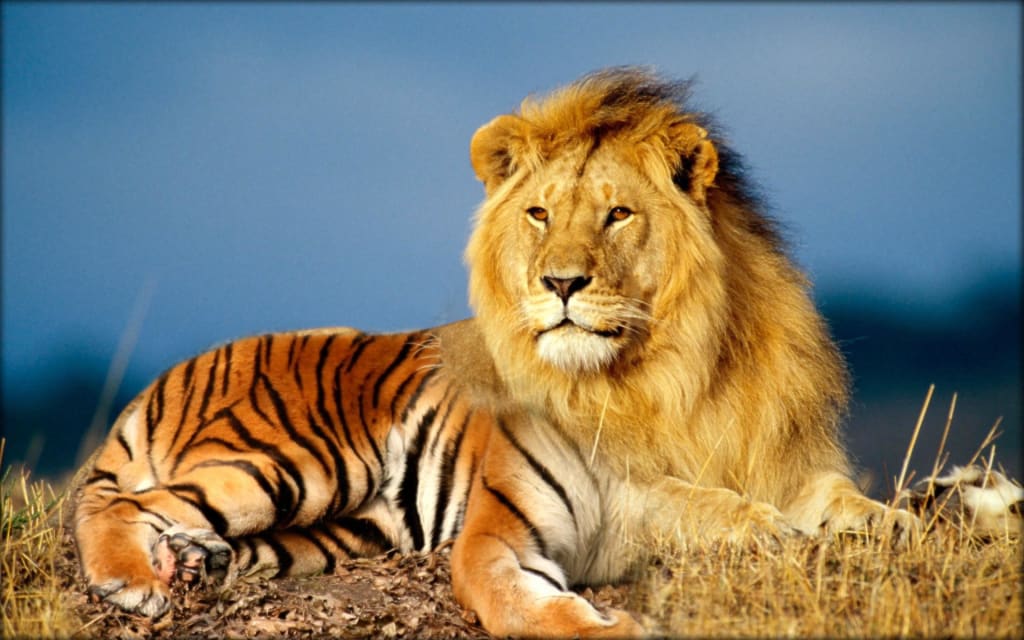
1., Liger:
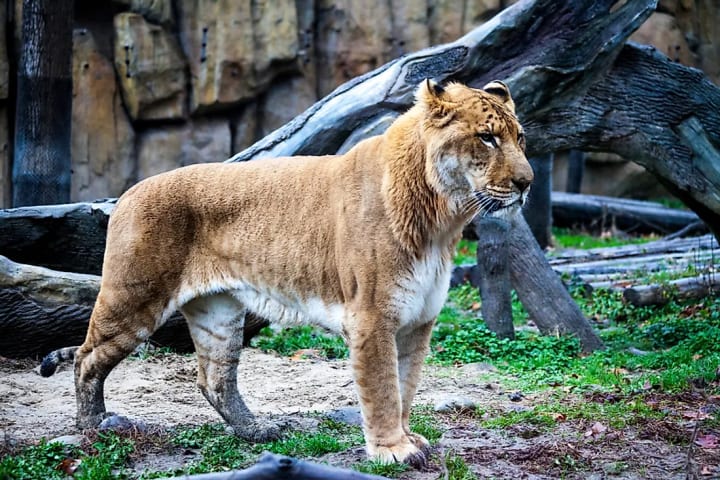
A liger is a hybrid animal resulting from the crossbreeding of a male lion and a female tiger. The liger is the largest known feline species in the world and is a combination of the physical characteristics of both the lion and the tiger. Here are some full details about the liger:
Appearance:
Ligers can grow to be much larger than their parents, and are often larger than both lions and tigers. Male ligers can weigh up to 900 pounds and can reach a length of up to 11 feet. Female ligers are usually smaller, weighing up to 500 pounds and reaching a length of up to 9 feet. Ligers have a golden-yellow fur color like lions, but they also have some stripes that resemble those of a tiger.
Habitat:
Ligers do not exist in the wild as lions and tigers live in different parts of the world. However, they can be found in some zoos and wildlife parks.
Behavior:
Ligers have characteristics of both lions and tigers. They are generally social like lions and have a tendency to live in prides. However, they also have some solitary tendencies like tigers and may wander off on their own. Ligers are also known for their playfulness and curiosity, and they enjoy swimming and playing in the water.
Breeding:
Ligers are a result of crossbreeding between a male lion and a female tiger. This is a rare occurrence as lions and tigers are not found in the same geographical location and do not normally mate in the wild. In captivity, the mating process is facilitated by humans.
Health:
Ligers are generally healthy animals and have a longer lifespan than lions or tigers. However, they may experience some health issues due to their large size, such as joint problems and obesity.
Conservation:
Ligers are not a naturally occurring species and are not recognized by any wildlife conservation organizations. However, they are protected by animal welfare laws in countries where they exist.
2., Asiatic lion:
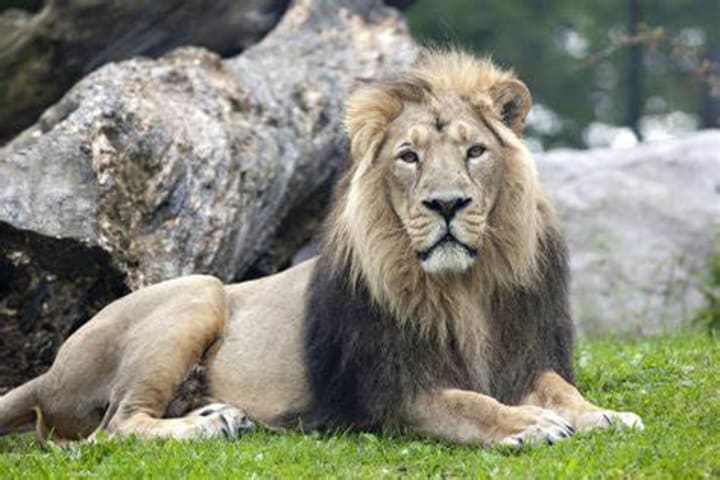
The Asiatic lion, also known as the Indian lion, is a subspecies of the lion that is found only in the Gir Forest of Gujarat, India. Here are some full details about the Asiatic lion:
Appearance:
The Asiatic lion is similar in appearance to the African lion, but it has a shorter and narrower mane. The mane of a male Asiatic lion is typically less developed than that of an African lion, and the mane of a female Asiatic lion is almost non-existent. The coat of an Asiatic lion is generally shorter and lighter in color than that of an African lion.
Habitat:
Asiatic lions are found only in the Gir Forest National Park and Wildlife Sanctuary in Gujarat, India. The park covers an area of around 1,400 square kilometers, and it is the only place in the world where Asiatic lions exist in the wild.
Behavior:
Asiatic lions are social animals that live in groups called prides. A pride usually consists of one or two adult males, several females, and their cubs. The males are responsible for defending the territory, while the females are responsible for hunting and caring for the cubs. Asiatic lions are primarily active during the night, and they spend most of the day resting in the shade.
Diet:
The diet of an Asiatic lion consists mainly of deer, wild boar, and other small mammals. They are also known to prey on domestic animals such as buffalo and cattle.
Conservation:
The Asiatic lion is a critically endangered species, with only around 500 individuals remaining in the wild. The population of Asiatic lions was once much larger, but it was hunted to near extinction in the early 20th century. Today, the Gir Forest National Park and Wildlife Sanctuary is heavily protected, and conservation efforts have been successful in increasing the population of Asiatic lions. The government of India has also initiated efforts to establish a second population of Asiatic lions in another part of the country, in case of an epidemic or natural disaster that could wipe out the entire population in Gir Forest.
3., Barbary lion:

The Barbary lion, also known as the Atlas lion or North African lion, is a subspecies of lion that was once found in North Africa, including the Atlas Mountains and the Barbary Coast. Here are some full details about the Barbary lion:
Appearance:
The Barbary lion was a large and powerful cat, with males weighing up to 550 pounds and reaching a length of up to 10 feet, including the tail. It had a distinctive black mane that extended down the chest and belly, and its coat was generally lighter in color than that of other lion subspecies.
Habitat:
The Barbary lion once lived in North Africa, including the Atlas Mountains and the Barbary Coast. However, it is believed to have gone extinct in the wild in the 1960s due to hunting, habitat loss, and other factors.
Behavior:
The behavior of the Barbary lion was similar to that of other lions. They were social animals that lived in prides, and were primarily active at night. They hunted together in groups, with females doing most of the hunting while males defended the territory and cubs.
Diet:
The Barbary lion's diet consisted of a wide range of prey, including wild boar, deer, antelopes, and other large mammals.
Conservation:
The Barbary lion is believed to be extinct in the wild, and only a few individuals are believed to exist in captivity. The species was heavily hunted for sport and for its fur, and its habitat was destroyed by human activity. Efforts are being made to reintroduce the Barbary lion to its former range, but this is a difficult and complex process.
In conclusion, the Barbary lion was a magnificent animal that once roamed the North African continent. Unfortunately, it is now believed to be extinct in the wild, and only a few individuals are believed to exist in captivity. Conservation efforts are ongoing to try to reintroduce the species to its former range, but it will be a difficult and complex process.
4., Transvaal lion:
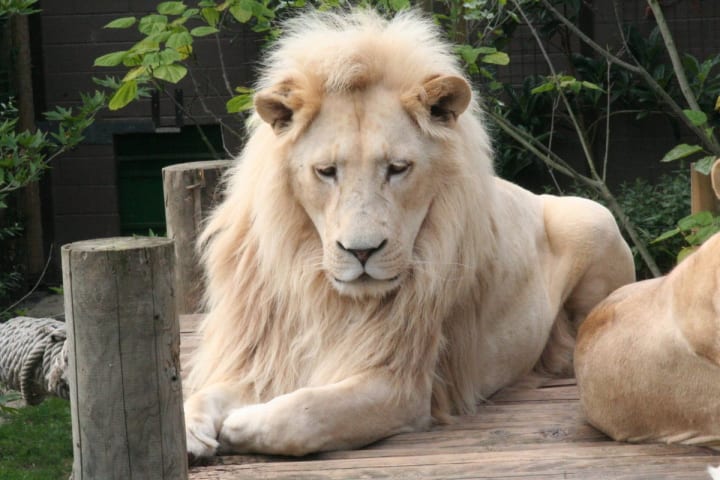
The Transvaal lion, also known as the Southeast African lion or Kruger lion, is a subspecies of lion that is found in southern and eastern Africa. Here are some full details about the Transvaal lion:
Appearance:
The Transvaal lion is a large and powerful cat, with males weighing up to 550 pounds and reaching a length of up to 10 feet, including the tail. It has a distinctive mane that varies in color from black to blonde, and its coat is generally light tan or brown in color.
Habitat:
The Transvaal lion is found in a wide range of habitats, including savannas, grasslands, and woodlands, in southern and eastern Africa. Its range includes parts of South Africa, Zimbabwe, Mozambique, and Tanzania.
Behavior:
The Transvaal lion is a social animal that lives in groups called prides. A pride usually consists of one or two adult males, several females, and their cubs. The males are responsible for defending the territory, while the females are responsible for hunting and caring for the cubs. Transvaal lions are primarily active during the night, and they spend most of the day resting in the shade.
Diet:
The diet of a Transvaal lion consists mainly of antelopes, zebras, and other large mammals. They are also known to prey on domestic animals such as cattle and sheep.
Conservation:
The Transvaal lion is classified as a vulnerable species by the International Union for Conservation of Nature (IUCN). Its population has declined significantly due to hunting, habitat loss, and human-wildlife conflict. Efforts are being made to conserve the species through measures such as habitat protection, anti-poaching efforts, and community-based conservation programs.
In conclusion, the Transvaal lion is a magnificent animal that is found in a wide range of habitats in southern and eastern Africa. It is a vulnerable species that is facing numerous threats, including hunting, habitat loss, and human-wildlife conflict. Conservation efforts are ongoing to try to protect and conserve the species for future generations.
5., Ethiopian lion:
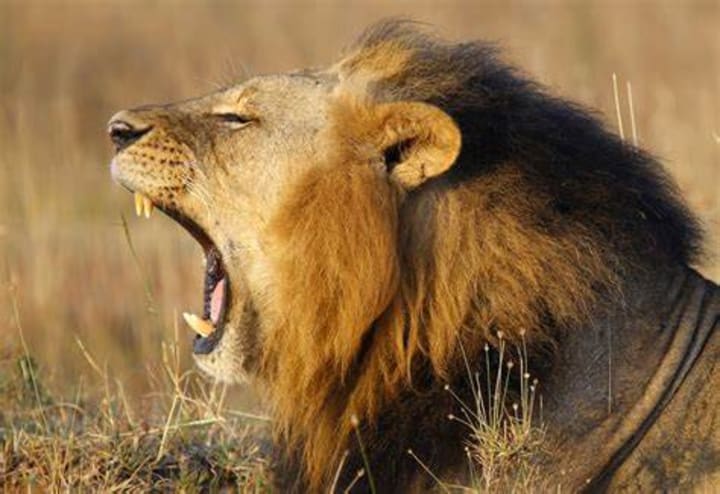
The Ethiopian lion, also known as the Abyssinian lion or the Ethiopian wolf, is a subspecies of lion that is found only in Ethiopia. Here are some full details about the Ethiopian lion:
Appearance:
The Ethiopian lion is a large and powerful cat, with males weighing up to 500 pounds and reaching a length of up to 9 feet, including the tail. It has a distinctive mane that varies in color from black to blonde, and its coat is generally light tan or brown in color. Ethiopian lions are smaller and lighter in color than other subspecies of lions.
Habitat:
The Ethiopian lion is found in a range of habitats in Ethiopia, including savannas, grasslands, and woodlands. Its range includes the Bale Mountains, the Simien Mountains, and the Harar highlands.
Behavior:
The Ethiopian lion is a social animal that lives in groups called prides. A pride usually consists of one or two adult males, several females, and their cubs. The males are responsible for defending the territory, while the females are responsible for hunting and caring for the cubs. Ethiopian lions are primarily active during the night, and they spend most of the day resting in the shade.
Diet:
The diet of an Ethiopian lion consists mainly of antelopes, zebras, and other large mammals. They are also known to prey on domestic animals such as cattle and sheep.
Conservation:
The Ethiopian lion is classified as a critically endangered species by the International Union for Conservation of Nature (IUCN). Its population has declined significantly due to hunting, habitat loss, and human-wildlife conflict. Efforts are being made to conserve the species through measures such as habitat protection, anti-poaching efforts, and community-based conservation programs.
6., Ababa lion:
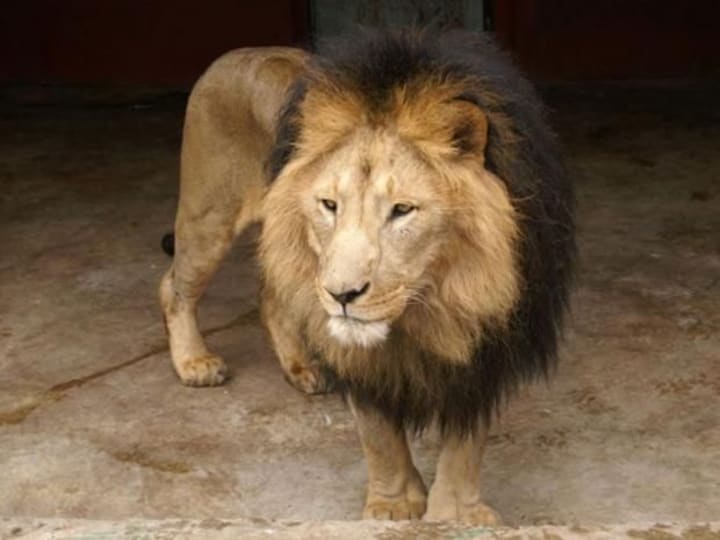
The Ababa lion, also known as the Addis Ababa lion or the Ethiopian lion, is a lion subspecies that is endemic to Ethiopia. It is the national animal of Ethiopia and is depicted on the country's coat of arms. Here are some full details about the Ababa lion:
History:
The Ababa lion was first described in 1930 by British zoologist Reginald Innes Pocock. It is believed to be closely related to the Barbary lion, which is now extinct in the wild. The Ababa lion was once widespread throughout Ethiopia, but its population has declined significantly due to habitat loss and hunting.
Appearance:
The Ababa lion is a large and powerful cat, with males weighing up to 500 pounds and reaching a length of up to 9 feet, including the tail. It has a distinctive mane that varies in color from black to blonde, and its coat is generally light tan or brown in color. Ababa lions are smaller and lighter in color than other subspecies of lions.
Habitat:
The Ababa lion is found in a range of habitats in Ethiopia, including savannas, grasslands, and woodlands. Its range includes the Bale Mountains, the Simien Mountains, and the Harar highlands.
Behavior:
The Ababa lion is a social animal that lives in groups called prides. A pride usually consists of one or two adult males, several females, and their cubs. The males are responsible for defending the territory, while the females are responsible for hunting and caring for the cubs. Ababa lions are primarily active during the night, and they spend most of the day resting in the shade.
Diet:
The diet of an Ababa lion consists mainly of antelopes, zebras, and other large mammals. They are also known to prey on domestic animals such as cattle and sheep.
Conservation:
The Ababa lion is classified as a critically endangered species by the International Union for Conservation of Nature (IUCN). Its population has declined significantly due to hunting, habitat loss, and human-wildlife conflict. Efforts are being made to conserve the species through measures such as habitat protection, anti-poaching efforts, and community-based conservation programs.
7., White lion:
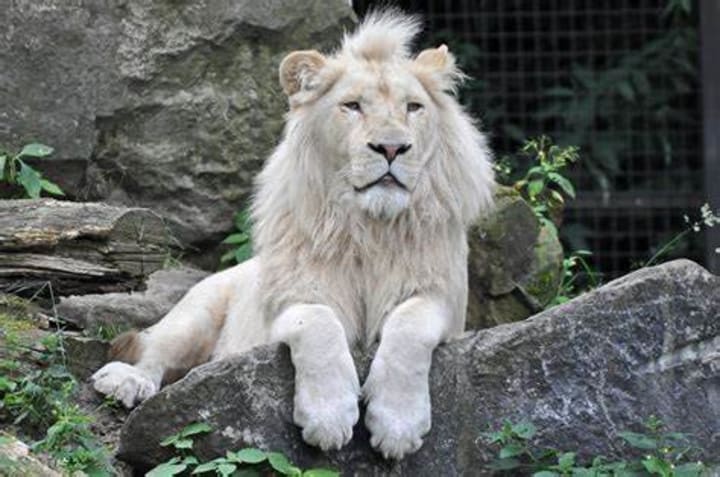
The white lion is a rare color mutation of the African lion, and is not considered a distinct subspecies. Here are some full details about the white lion:
History:
White lions were first discovered in the Timbavati region of South Africa in the 1930s, where they were revered by the local Shangaan people as sacred animals. White lions were thought to have been hunted to extinction in the wild, but in the 1990s, a small population was discovered in the Timbavati Private Game Reserve.
Appearance:
The white lion is characterized by its unique white or cream-colored fur, which is caused by a recessive gene. White lions have blue or green eyes, and some may have a light tan or brown tint in their fur. They are not albinos, as they still have some pigment in their eyes and skin.
Habitat:
White lions are found in the same range as other African lions, which includes savannas, grasslands, and woodlands in South Africa, Botswana, and Zimbabwe.
Behavior:
White lions are social animals that live in groups called prides. A pride usually consists of one or two adult males, several females, and their cubs. The males are responsible for defending the territory, while the females are responsible for hunting and caring for the cubs. White lions are primarily active during the night, and they spend most of the day resting in the shade.
Diet:
The diet of a white lion consists mainly of antelopes, zebras, and other large mammals. They are also known to prey on domestic animals such as cattle and sheep.
Conservation:
White lions are not recognized as a separate subspecies by the International Union for Conservation of Nature (IUCN), but they are considered endangered due to hunting, habitat loss, and human-wildlife conflict. Some conservation programs are working to protect white lions by breeding and reintroducing them into the wild, but others argue that this practice may not be beneficial to the species as a whole.
8., Cape lion:
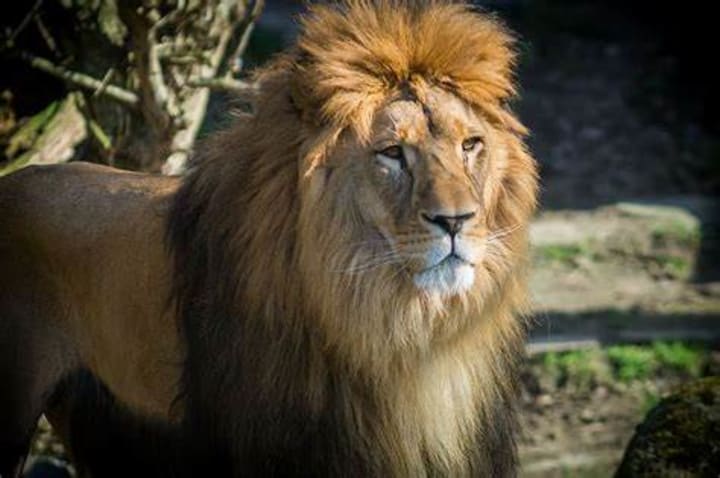
The Cape lion, also known as the Cape or South African lion, was a subspecies of lion that once roamed southern Africa. Here are some full details about the Cape lion:
History:
The Cape lion was first described in the early 19th century by naturalist Johann Christian Daniel von Schreber. It was once widespread throughout southern Africa, but its population declined significantly in the late 1800s due to hunting and habitat loss. The last recorded sighting of a Cape lion in the wild was in 1858, and it is believed to have gone extinct shortly thereafter.
Appearance:
The Cape lion was a relatively small subspecies of lion, with males weighing up to 400 pounds and reaching a length of up to 8 feet, including the tail. It had a distinctive black mane that extended down its back and onto its belly. Its coat was a light sandy color, and its belly was white.
Habitat:
The Cape lion was found in a range of habitats in southern Africa, including savannas, grasslands, and woodlands. Its range included the Cape Province of South Africa, Namibia, Botswana, and Zimbabwe.
Behavior:
The Cape lion was a social animal that lived in groups called prides. A pride usually consisted of one or two adult males, several females, and their cubs. The males were responsible for defending the territory, while the females were responsible for hunting and caring for the cubs. Cape lions were primarily active during the night, and they spent most of the day resting in the shade.
Diet:
The diet of a Cape lion consisted mainly of antelopes, zebras, and other large mammals. They were also known to prey on domestic animals such as cattle and sheep.
Conservation:
The Cape lion is believed to have gone extinct in the wild in the late 1800s, and there are no known living individuals of this subspecies. Some researchers have suggested that the Cape lion may have been a separate subspecies from other African lions, but this is still a matter of debate. Efforts are ongoing to try to conserve and protect the remaining subspecies of African lions, which continue to face many threats to their survival.
In conclusion, the Cape lion was a subspecies of lion that once roamed southern Africa but is believed to have gone extinct in the late 1800s. It was known for its distinctive black mane and sandy-colored coat. While the Cape lion may be gone, efforts are ongoing to try to protect and conserve other subspecies of African lions, which continue to face many threats to their survival.
About the Creator
Enjoyed the story? Support the Creator.
Subscribe for free to receive all their stories in your feed. You could also pledge your support or give them a one-off tip, letting them know you appreciate their work.






Comments
There are no comments for this story
Be the first to respond and start the conversation.